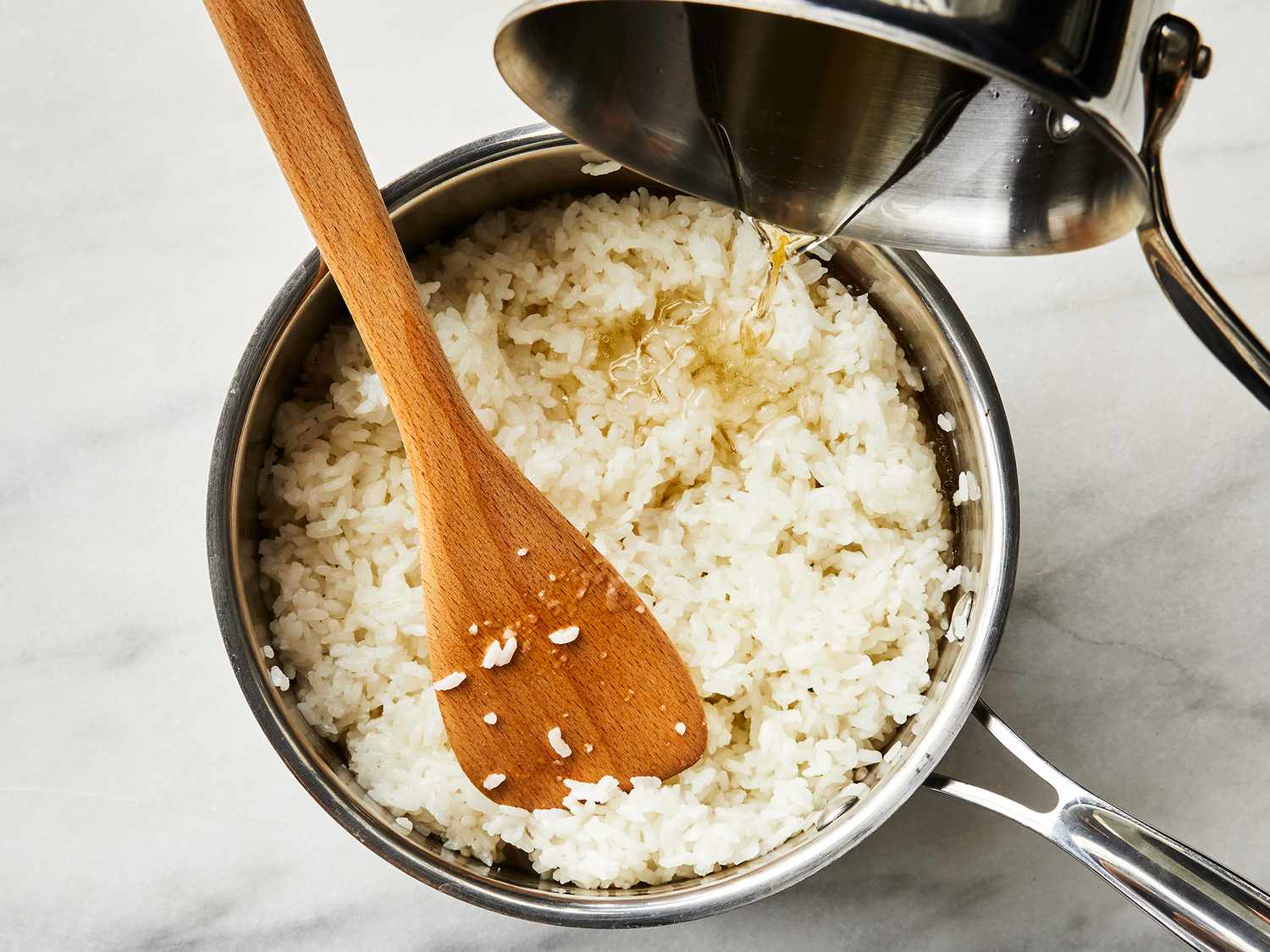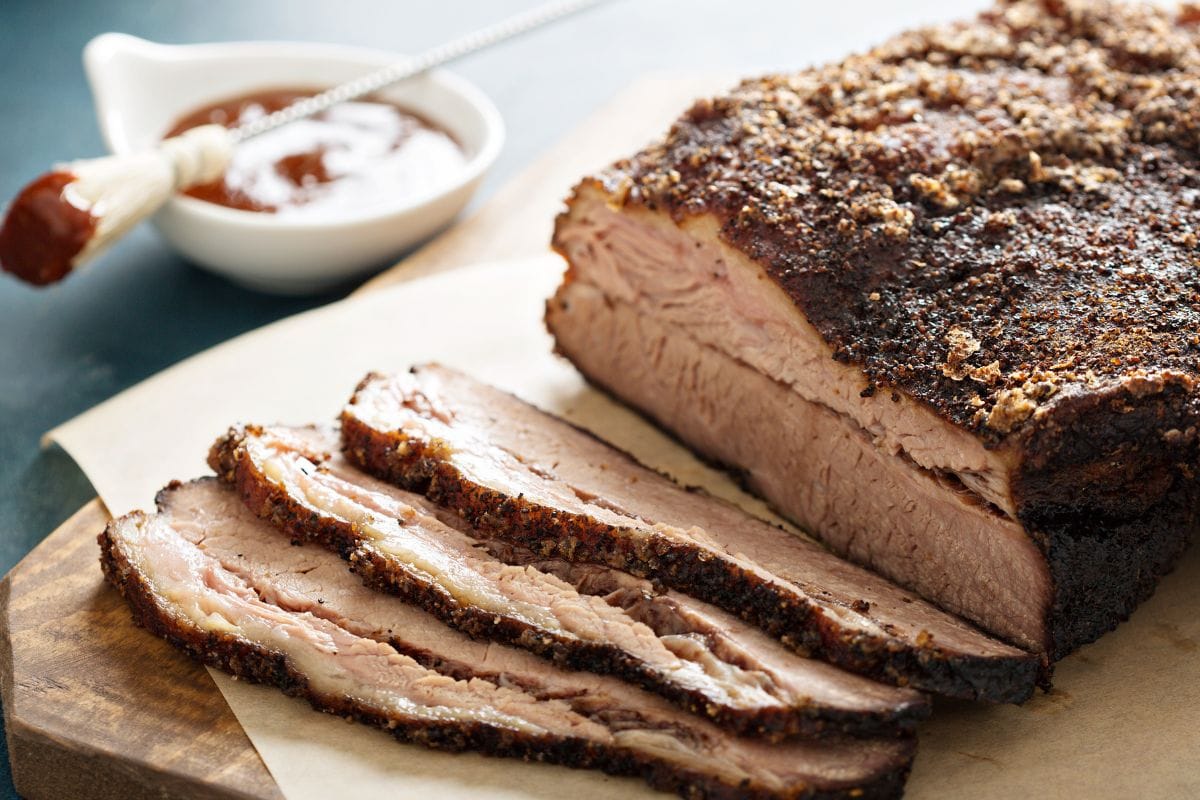

Articles
How To Store Leftover Sushi
Modified: December 7, 2023
Learn how to store leftover sushi properly with our helpful articles. Keep your sushi fresh and delicious for longer.
(Many of the links in this article redirect to a specific reviewed product. Your purchase of these products through affiliate links helps to generate commission for Storables.com, at no extra cost. Learn more)
Introduction
Sushi is a delicious and popular Japanese dish loved by many around the world. Whether you enjoy it at a restaurant or make it at home, there’s a good chance you may have some leftovers. But what do you do with those leftover pieces of sushi?
Storing leftover sushi is essential to ensure its freshness and prevent any potential foodborne illnesses. Sushi, being a delicate and perishable food, requires careful handling and storage. In this article, we will discuss some essential tips on how to store leftover sushi properly.
Understanding the perishability of sushi is crucial in knowing why proper storage is necessary. Sushi contains uncooked or partially cooked fish or seafood, which makes it highly prone to bacterial growth if not handled correctly. The rice used in sushi is also a potential breeding ground for bacteria if left at room temperature for too long.
Now that we understand the importance of storing leftover sushi, let’s delve into some general tips to ensure its freshness and safety.
Key Takeaways:
- Properly storing leftover sushi is crucial to maintain its freshness and safety. Follow general tips, such as wrapping it tightly, refrigerating immediately, and consuming within 24 hours, to ensure maximum flavor and quality.
- Avoid reheating leftover sushi and store separate components to maintain individual flavors and textures. Invest in optimal storage containers and consider freezing for extended storage, while being mindful of potential texture changes.
Read more: How To Store Leftover Sushi Rice
Understanding the perishability of sushi
Before we can discuss the proper ways to store leftover sushi, it’s important to understand why sushi is highly perishable. Sushi consists of various components, including raw or partially cooked fish or seafood, cooked or seasoned rice, and various toppings and fillings. Each of these components has its own perishability factors.
The raw or partially cooked fish or seafood used in sushi is highly sensitive to temperature and time. Fish and seafood have a limited shelf life due to the presence of natural enzymes and bacteria. When left at room temperature, these microorganisms can multiply rapidly, leading to spoilage and potential foodborne illnesses. It’s vital to ensure that any leftover sushi containing raw fish or seafood is stored properly to maintain its freshness and quality.
The rice used in sushi also plays a crucial role in its perishability. Cooked rice can serve as an ideal breeding ground for bacteria. When left at room temperature for an extended period, the moisture content in the rice can create an environment conducive to bacterial growth. This can lead to food poisoning if consumed.
Additionally, sushi may have various toppings and fillings, such as avocado, cucumber, or cream cheese. These ingredients can also deteriorate quickly and may not be safe to consume if stored improperly.
Considering all these factors, it’s evident that proper storage is essential to maintain the freshness and safety of leftover sushi. Let’s explore some general tips on how to store it correctly to ensure its quality and minimize the risk of foodborne illnesses.
General tips on storing leftover sushi
When it comes to storing leftover sushi, there are a few key tips to keep in mind. These tips will help maintain the quality and safety of the sushi, ensuring that you can enjoy it later without any concerns. Let’s take a look at some of these general tips:
- Wrap it tightly: To prevent air exposure and moisture loss, tightly wrap the leftover sushi pieces. Use plastic wrap or aluminum foil to create a seal around the sushi, ensuring that it stays fresh and protected.
- Refrigerate immediately: Sushi should be refrigerated as soon as possible. The cool temperature of the refrigerator slows down bacterial growth and keeps the sushi fresh. Place the wrapped sushi in an airtight container or wrap it twice to prevent any smells or flavors from permeating the sushi or other foods in the refrigerator.
- Use within 24 hours: Sushi is best enjoyed fresh, so try to consume the leftovers within 24 hours. While refrigeration helps preserve the sushi, it’s still recommended to consume it as soon as possible for maximum flavor and quality.
- Avoid reheating: Unlike many other leftovers, sushi should not be reheated. The delicate nature of the fish and rice can result in changes in texture and flavor when reheated. It’s best to eat sushi cold or at room temperature.
- Store separate components: If your sushi has separate components like rolls and nigiri, it’s best to store them separately. This prevents the flavors from blending together and allows you to enjoy each type of sushi individually.
- Optimal storage containers: Investing in proper storage containers can make a difference in preserving the quality of leftover sushi. Look for containers that are airtight, leak-proof, and BPA-free to ensure the freshness and safety of the sushi.
- Consider freezing: If you anticipate not consuming the sushi within 24 hours, you can consider freezing it. Freezing sushi can extend its shelf life, but it’s important to note that the texture may change slightly once thawed. Wrap the sushi tightly and place it in a freezer-safe container or bag.
By following these general tips, you can ensure that your leftover sushi remains fresh, safe, and enjoyable to eat. However, it’s important to use your best judgment and discard any sushi that smells off or shows signs of spoilage. Now let’s dive deeper into each of these tips and explore the specifics of storing leftover sushi.
Wrap it tightly
When it comes to storing leftover sushi, one of the most crucial steps is to wrap it tightly. Wrapping the sushi tightly helps to preserve its freshness, prevent moisture loss, and protect it from exposure to air and other potential contaminants. Here are some tips on how to wrap leftover sushi properly:
- Use plastic wrap or aluminum foil: The most common and convenient way to wrap leftover sushi is by using plastic wrap or aluminum foil. Place the sushi in the center of the wrap and fold the sides over it. Then, firmly press and seal the edges to create a tight seal. Make sure there are no gaps or openings where air can enter.
- Wrap individual pieces or larger portions: Depending on the quantity and size of the leftover sushi, you can choose to wrap individual pieces or larger portions. Wrapping individual pieces is ideal if you want to enjoy them separately or if you have different types of sushi. If you have larger portions, wrap them together while ensuring that the wrap is tight and secure.
- Avoid overlapping sushi pieces: When wrapping multiple sushi pieces, make sure they are not overlapping each other. Overlapping can create moisture buildup and lead to deterioration. Place the sushi side by side or separate them with a small strip of plastic wrap or wax paper to prevent sticking.
- Seal any open ends: After wrapping the sushi, check for any open ends or gaps. Press and seal them firmly to ensure that no air can get in. Proper sealing is crucial in maintaining the freshness and quality of the sushi.
- Label the wrapped sushi: To avoid confusion or mix-ups, it’s a good idea to label the wrapped sushi with the date and type of sushi. This will help you keep track of how long the sushi has been stored and which ones to consume first.
Remember, the key is to create a tight and secure seal around the leftover sushi to prevent air exposure and moisture loss. By wrapping it tightly, you can help maintain the sushi’s texture, flavor, and overall quality.
Now that we’ve covered the importance of wrapping leftover sushi tightly, let’s move on to the next tip: refrigerating it immediately.
Refrigerate immediately
After enjoying your sushi and wrapping any leftovers tightly, the next step is to refrigerate them immediately. Storing sushi at the proper temperature is essential to prevent bacterial growth and maintain its freshness. Here are some important points to keep in mind when refrigerating leftover sushi:
- Place sushi in the refrigerator promptly: As soon as you have wrapped the leftover sushi, place it in the refrigerator without delay. The cool temperature of the fridge inhibits the growth of bacteria and helps to preserve the quality of the sushi.
- Choose a cold spot in the refrigerator: When storing sushi, opt for the coldest spot in your refrigerator. This could be the bottom shelf or the back of the fridge where the temperature is usually lower and more consistent.
- Use an airtight container or double wrapping: To further protect the sushi from air exposure and potential contamination, consider placing the wrapped sushi in an airtight container. Alternatively, you can double-wrap it with additional layers of plastic wrap or aluminum foil to ensure a tight seal.
- Keep sushi away from strong-smelling foods: Sushi can absorb odors from other strong-smelling foods in the refrigerator. To avoid any unwanted flavors, store the sushi away from pungent ingredients like onions, garlic, or potent cheeses.
- Avoid overcrowding the refrigerator: Proper airflow is important in maintaining the refrigerator’s temperature and ensuring even cooling. Avoid overcrowding the refrigerator to allow for proper circulation of cold air around the sushi and other items stored inside.
- Do not leave sushi at room temperature: Sushi should not be left at room temperature for an extended period. Bacteria multiply rapidly in the danger zone of 40°F to 140°F (4°C to 60°C). To prevent bacterial growth, make sure to refrigerate the leftover sushi within two hours of being prepared or at the earliest opportunity.
By refrigerating the sushi immediately, you reduce the risk of bacterial growth and preserve its freshness. Remember to follow these guidelines to ensure that the leftover sushi remains safe and enjoyable to eat.
Next up, we will discuss the importance of using leftover sushi within 24 hours and why reheating it is not recommended.
Read more: How To Store Sushi Overnight
Use within 24 hours
When it comes to leftover sushi, it’s best to consume it within 24 hours of refrigeration. Sushi is meant to be enjoyed fresh, and while proper storage can help extend its shelf life, its quality will gradually deteriorate over time. Here’s why it’s important to use leftover sushi within 24 hours:
- Fresher taste and texture: Sushi tastes best when it’s fresh, with the fish or seafood being at its peak flavor and texture. As time passes, the flavors may become less vibrant, and the texture of the fish, rice, and toppings may change. Eating leftover sushi within 24 hours ensures that you experience it at its best.
- Reduced risk of foodborne illnesses: While properly refrigerated sushi is generally safe to consume within a couple of days, it’s best to err on the side of caution and consume it within 24 hours. Bacteria can still multiply, albeit at a slower rate, even in cold temperatures. To minimize the risk of foodborne illnesses, it’s advisable to enjoy leftover sushi as soon as possible.
- Potential quality deterioration: Over time, the rice in sushi can become dry and lose its moisture, which affects both the texture and taste. The fish or seafood may become overly soft or dry, compromising its flavor. By consuming leftover sushi within 24 hours, you ensure that it maintains its optimal quality.
- Food safety concerns: Leaving sushi in the refrigerator for an extended period increases the chances of cross-contamination. As other foods come into contact with the sushi or release odors, it can affect its taste and safety. Using leftover sushi within 24 hours minimizes the risk of contamination and freshness compromise.
While it’s important to adhere to the 24-hour guideline, always trust your senses when consuming leftover sushi. Discard any sushi that appears or smells off, as it may indicate spoilage or bacterial growth.
Now that we understand the importance of consuming leftover sushi within 24 hours, let’s move on to the next tip: avoiding reheating.
To store leftover sushi, wrap it tightly in plastic wrap and store it in the refrigerator. Consume it within 24 hours for the best taste and quality.
Avoid reheating
Unlike many other leftovers, sushi should not be reheated. Reheating sushi can adversely affect its taste, texture, and overall quality. Here’s why it’s best to avoid reheating leftover sushi:
- Texture changes: Sushi is delicately prepared and meant to be enjoyed at its original state. Reheating can cause the fish or seafood to become rubbery or overcooked, resulting in a less appealing texture. The rice may also become dry and lose its fluffy and sticky consistency.
- Loss of flavors: Reheating sushi can lead to a loss of delicate flavors. The heat can dull the natural flavors of the fish, seafood, and other ingredients used. The combination of flavors that makes sushi unique can be compromised, resulting in a less enjoyable eating experience.
- Bacterial growth concerns: Reheating can create an environment where bacteria can multiply. The warmed sushi may spend too much time in the temperature danger zone (between 40°F and 140°F or 4°C and 60°C), increasing the risk of foodborne illnesses. To maintain food safety, it’s best to consume sushi cold or at room temperature.
- Possible nutrient loss: Heat exposure during reheating can lead to nutrient loss in sushi. Sushi contains essential vitamins, minerals, and omega-3 fatty acids found in fish and seafood. Reheating can degrade these nutrients, resulting in a less nutritious meal.
- Overall quality compromise: Sushi is all about freshness, presentation, and balance. Reheating can disrupt the delicate balance of flavors, textures, and visual appeal. To fully enjoy the sushi experience, it’s best to savor it as intended, without the need for reheating.
Instead of reheating, it’s recommended to consume leftover sushi cold or at room temperature. If desired, you can let it sit at room temperature for a short period to take off the chill without compromising its quality.
Remember, proper storage and handling are key to preserving the freshness and safety of leftover sushi. By avoiding reheating, you ensure that each bite of sushi delivers the exquisite taste and texture it’s known for.
Now that we’ve covered the importance of avoiding reheating, let’s move on to the next tip: storing separate components of sushi.
Store separate components
When it comes to storing leftover sushi, especially if you have different types or components of sushi, it’s best to store them separately. Storing the components separately helps maintain their individual flavors, textures, and freshness. Here’s why it’s important to store separate components of sushi:
- Prevent flavor blending: Different types of sushi have distinct flavors that can be compromised when stored together. The flavors of sushi rolls, nigiri, or sashimi can blend together, altering the intended taste. Storing them separately ensures that each component retains its unique flavor profile.
- Preserve texture and quality: Each component of sushi has its own texture that can be affected by storage conditions. Mixing soft and crispy elements can result in a loss of texture and crispness. By storing separate components, you maintain their individual textures, ensuring a more enjoyable eating experience.
- Customize sushi combinations: Storing the components separately allows you to mix and match as desired. You can create new sushi combinations by combining different rolls, fish, and toppings. This flexibility adds excitement and variety to your meals.
- Easy portion control: Storing sushi components separately makes portion control easier. You can easily grab a single piece of sushi or assemble a customized sushi roll according to your preferences. This helps minimize food waste and allows you to enjoy sushi in the amounts that suit your appetite.
- Extend storage life: Certain components of sushi, such as raw fish or seafood, may have a shorter shelf life compared to others. By storing them separately, you can consume the more perishable components first while keeping the others fresh for a longer period.
When storing separate components, make sure to use individual airtight containers or wrap them tightly in plastic wrap or aluminum foil. Labeling the containers or wrappings can help you easily identify each component and keep track of their freshness.
By storing each component of sushi separately, you can maintain their individual qualities and enjoy a diverse range of flavor combinations. Now, let’s move on to discussing optimal storage containers for leftover sushi.
Optimal storage containers
Choosing the right storage containers for leftover sushi is crucial in preserving its freshness, preventing odor transfer, and ensuring food safety. Here are some factors to consider when selecting optimal storage containers for your sushi:
- Airtight and leak-proof: Look for containers that have airtight seals and are leak-proof. This helps prevent air exposure, which can lead to the drying out of the sushi, as well as prevent any leaks or spills in the refrigerator.
- BPA-free and food-grade material: Opt for containers that are made of BPA-free and food-grade materials. This ensures that there are no harmful chemicals that can leach into the sushi, maintaining its safety and quality.
- Easy to clean: Choose containers that are easy to clean and maintain hygiene. Containers with smooth surfaces are preferable, as they are less prone to food particles getting stuck and are easier to wash thoroughly.
- Stackable design: If you have limited refrigerator space, consider containers with a stackable design. This allows you to maximize storage space without compromising the quality of the sushi.
- Clear and transparent: Transparent containers allow you to easily see the contents without having to open them. This helps you identify the type of sushi stored and reduces the need for unnecessary exposure to air.
- Compartmentalized containers: Compartmentalized containers are useful when storing different types of sushi or sushi components. They prevent flavors and textures from blending and make it easier to grab individual pieces or portions.
- Multiple size options: It’s helpful to have a variety of container sizes to accommodate different quantities of leftover sushi. Smaller containers are ideal for individual pieces, while larger ones can hold rolls or larger portions.
Investing in high-quality storage containers not only helps in preserving the freshness and quality of leftover sushi but also makes the storing and retrieval process more convenient. Remember to properly wash and dry the containers before using them to store sushi to ensure optimal hygiene.
Now that we’ve covered the importance of utilizing optimal storage containers, let’s explore the option of freezing leftover sushi for extended storage.
Read more: How To Store Sushi Bake
Consider freezing
If you have leftover sushi that you know you won’t be able to consume within 24 hours, one option to extend its storage life is to consider freezing it. Freezing leftover sushi can help preserve its freshness for a longer period, allowing you to enjoy it at a later time. Here are some important points to consider when freezing sushi:
- Wrap tightly and securely: Before freezing, ensure that the sushi is tightly wrapped to minimize exposure to air and prevent freezer burn. Use plastic wrap or aluminum foil to create a tight seal around each piece or portion of sushi.
- Use airtight containers or freezer bags: To provide extra protection against freezer burn and contamination, consider placing the wrapped sushi in airtight containers or freezer bags. Remember to remove any excess air from the bags before sealing.
- Label and date the packages: Properly label each package with the date of freezing to keep track of its freshness. This will help you prioritize the consumption of sushi in the order of when it was frozen.
- Freeze as soon as possible: For optimal results, freeze the sushi as soon as possible after wrapping. This will help maintain its quality and minimize the risk of bacterial growth.
- Thaw carefully: When you’re ready to enjoy the frozen sushi, thaw it carefully in the refrigerator overnight. Avoid thawing sushi at room temperature, as this can lead to bacterial growth. Once thawed, consume the sushi within 24 hours for the best taste and texture.
- Note potential texture changes: Keep in mind that freezing and thawing sushi may result in slight changes in texture. The rice may become slightly drier, and the overall texture of the sushi may be different from its original fresh state. However, the flavors should remain intact.
- Consider freezing components separately: If you have different types or components of sushi, you may consider freezing them separately. This allows for more flexibility when thawing and serving, as you can choose to combine different sushi components as desired.
Although freezing sushi can help extend its storage life, it’s important to note that the quality may not be exactly the same as when it was fresh. The texture and overall eating experience may be slightly compromised. It’s always best to consume sushi fresh, but freezing can be a viable option when needed.
Now that we’ve explored the option of freezing leftover sushi, let’s summarize the key points discussed so far.
Conclusion
Properly storing leftover sushi is essential to maintain its freshness, flavor, and safety. By following some general tips and guidelines, you can ensure that your leftover sushi remains enjoyable and safe to eat. Here’s a recap of the key points discussed:
- Understanding the perishability of sushi: Sushi is highly perishable due to its raw or partially cooked fish, cooked rice, and various toppings. Knowing this highlights the importance of proper storage.
- General tips on storing leftover sushi: Wrap the sushi tightly with plastic wrap or aluminum foil, refrigerate it immediately, and consume it within 24 hours for the best taste and quality.
- Avoid reheating: Reheating sushi can lead to texture and flavor changes. It’s best to enjoy leftover sushi cold or at room temperature.
- Store separate components: Storing different types or components of sushi separately helps maintain their individual flavors, textures, and freshness.
- Optimal storage containers: Use airtight, leak-proof, BPA-free containers that are easy to clean and stackable. Transparent containers and compartmentalized options can also be beneficial.
- Consider freezing: Freezing leftover sushi can extend its storage life, but consider the potential texture changes. Remember to wrap it tightly, label, and date the packages.
By following these guidelines, you can maximize the lifespan of leftover sushi while ensuring its flavors and textures remain intact. Always trust your senses and discard any sushi that appears or smells off to avoid any potential foodborne illnesses.
Now that you’re equipped with the knowledge of how to store leftover sushi properly, you can enjoy this beloved Japanese delicacy even when dining at home. So, the next time you have sushi leftovers, wrap them tightly, refrigerate promptly, and savor the flavors within 24 hours.
Frequently Asked Questions about How To Store Leftover Sushi
Was this page helpful?
At Storables.com, we guarantee accurate and reliable information. Our content, validated by Expert Board Contributors, is crafted following stringent Editorial Policies. We're committed to providing you with well-researched, expert-backed insights for all your informational needs.














0 thoughts on “How To Store Leftover Sushi”